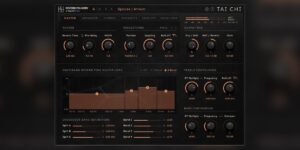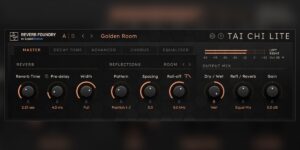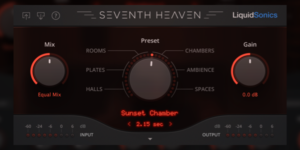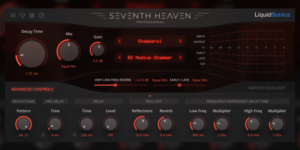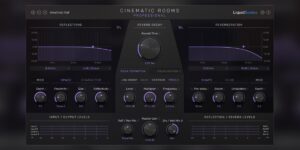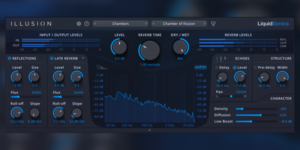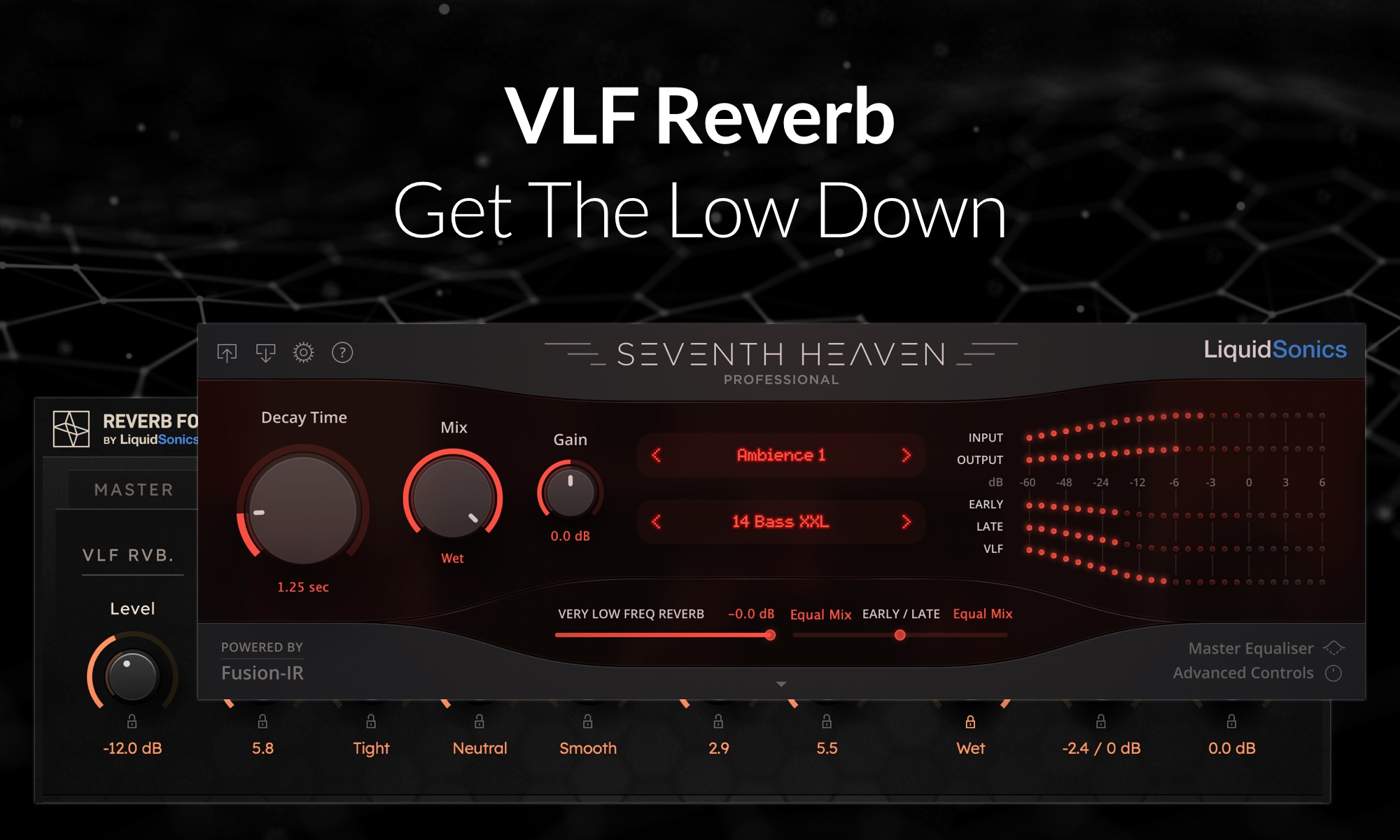
What Is A VLF Reverb?
Low frequency acoustics are essential for conveying realism in room simulations and play an important role when applying reverb in a mix. Therefore one of the most important topics in modern reverb design, and a distinctive aspect of many LiquidSonics plug-ins, is the special attention paid to the Very Low Frequency (VLF) reverb treatment.
Designing the low-frequency portion of a reverb presents unique and interesting challenges.
As described by digital reverb pioneer Manfred Schroeder in the 1960s, room acoustics are modally dominated at low frequencies whereas at higher frequencies diffuse field behaviours take precedence in how we perceive the late decay of a space. Furthermore, in a digital reverb practical musical considerations must be taken into account to ensure the behaviour of the VLF meets the needs of music producers and mixers. These are just two of the many factors that are carefully taken into account when designing the VLF component of a reverb.
You will find dedicated low frequency controls in most LiquidSonics reverbs that provide room simulations including Illusion, Seventh Heaven and Cinematic Rooms. In this article we discuss some of the finer details about what makes a VLF different from the main reverb and present some audio examples made with Tai Chi which recently received a VLF in its v1.6 update. Tai Chi Lite also received a VLF in its free v1.6 update which you can find on the downloads page.
Whilst the first steps towards providing dedicated low frequency controls were evident in early reverbs with techniques like low frequency reverb time contouring, we draw the article to a close by paying homage to the first reverb with a dedicated VLF processor in its design – the wonderful Bricasti M7.
By providing full control over the VLF processor level in Seventh Heaven and Seventh Heaven Professional you have just as much control over this crucial capability as is presented by the hardware itself.
What Makes A VLF Reverb Sound Special?
A VLF is implemented with DSP that takes into consideration the way low frequencies interact with a space and how they are perceived by a listener. The VLFs we are covering here also stand apart from traditional reverb boosts, cuts and contouring because they provide separate and independently adjustable low-end for the reverb that is influenced by the reverb time but does not linearly follow it. This provides a highly desirable presentation of low-frequency reverberation below ~125 Hz with some unique characteristics.
With the short reverb times in small rooms, the low frequencies may feel lacking in richness and fullness compared to the way we experience reverb in a real space. To counter this, a VLF will extend a little beyond the main reverb ensuring a more robust low end lift. This is particularly beneficial for small rooms that need some additional low frequency presence, or musical applications that require a more pronounced bass extension but may not require an excessive main reverb decay time.
Conversely with longer reverb tails, the VLF reverb length is restrained a little to avoid an excessive build-up of low-frequency rumble which could otherwise overwhelm the low end of a mix. This helps reduce the need to dramatically pull back on low reverb time multipliers or apply low cut/shelf filters that can limit a reverb’s latitude for building up a natural sounding low to low-mid warmth and body.
A VLF Is Now Available In Tai Chi v1.6
Tai Chi and Tai Chi Lite are the latest LiquidSonics reverbs to receive a VLF. In version 1.6 the dedicated VLF processor can be found in the Advanced tab labelled “VLF Rvb”.
Many of the factory presets in the chambers, rooms and spaces banks have been enhanced to take advantage of this feature. You’ll notice how much extra depth and body a VLF can bring to the character of a reverb with material containing a lot of low end energy such as drums, or orchestral music where extra low end presence can make a big difference to the richness of a space.
Of course your existing sessions will recall without the VLF just as you left them.
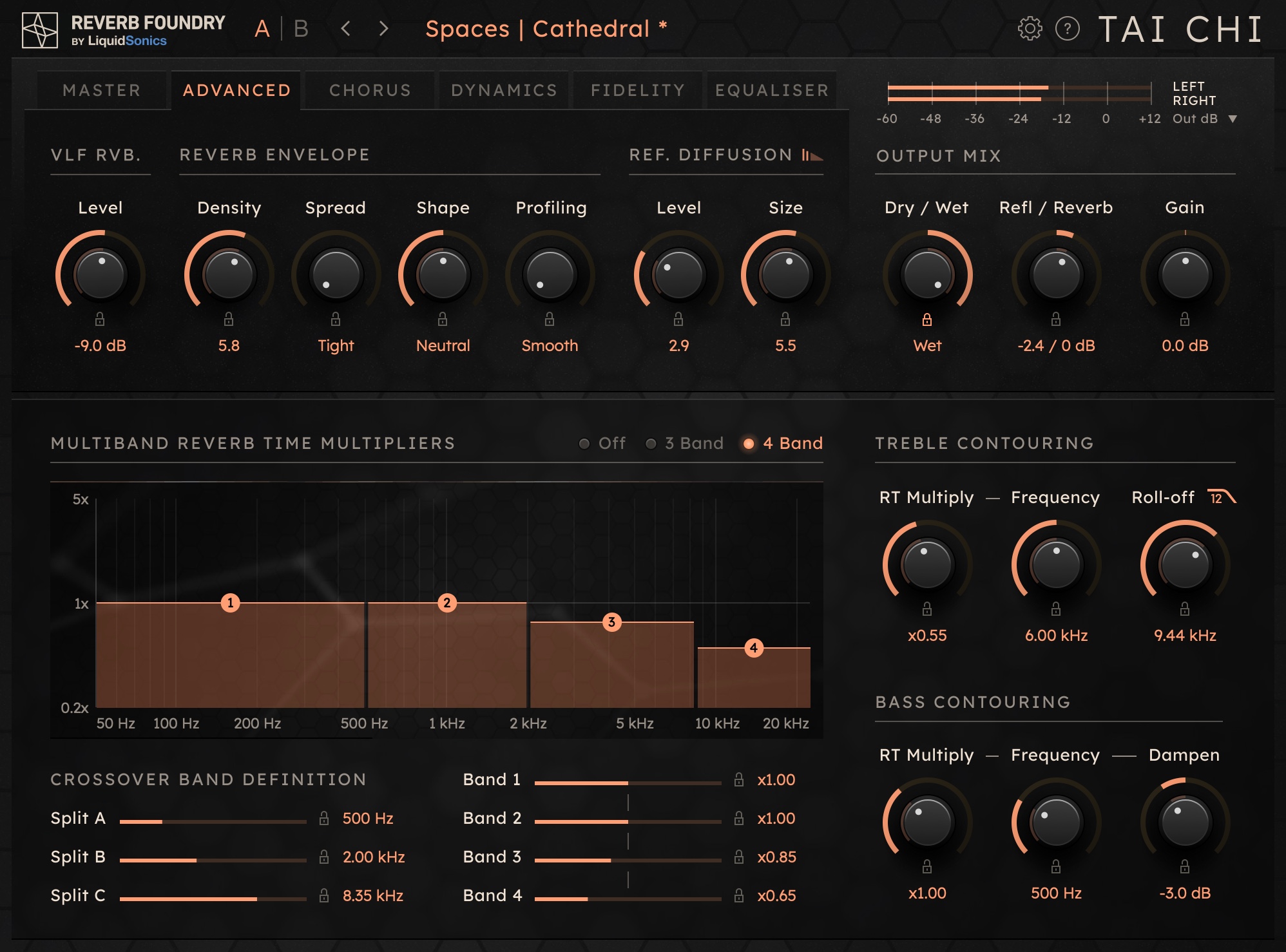
Tai Chi VLF Audio Examples
Take a listen to some audio examples to get an impression of the sound of Tai Chi’s VLF – it will be best to listen on headphones or monitors with a reasonably competent low end (this is not one for phones). As is often the case with audio demos, the aim is to emphasise features for illustration purposes rather than as a guide for mixing so in most practical scenarios a much lower VLF level would be appropriate than in these samples.
In this example the “60’s Drumset Shuffle 01” loop from Apple’s Logic Pro is passed through the new Tidy Chamber preset from Tai Chi. First dry for reference; then two passes initially without the VLF and then with the VLF; finally another two passes (fully wet) so you can hear just the effect of the reverb itself. Note how the VLF adds a robust low end with timing characteristics that could not easily be achieved with EQ or the reverb contouring/multi-band facilities.
The next sample uses the longer preset Lowly Space and a Logic Pro drummer patch to illustrate the VLF providing a brief low end boost to a much longer reverb patch. Note how the VLF adds weight to the initial reverb and reflections region, but does not create excessive boom or muddiness throughout the remainder of the very long main decay of the reverb as would be the case with EQ or low reverb extension with contouring.
In the final example, we have are using a “Headbop Soundset” loop from Logic Pro with the new Round Room preset; this is a shorter reverb illustrating that as the main reverb time decreases we still retain a full sounding VLF because it is decreasing in length more slowly than the main reverb.
Going Deeper
The interplay of reverb time multipliers, bass dampening and now VLF are key to building wonderfully rich spaces in Tai Chi.
By using the Tai Chi low end bass dampening control (which exhibits an effect similar to a low shelf EQ on just the reverb), it’s easy to create a little extra space in the bass region within which to explore how the VLF can add subtle warmth and character, all without overwhelming the mix. You can even control how the main reverb low end then extends or pulls back without compromising the effect of the VLF by using the multi-band multipliers and bass contour controls – there’s a lot of power and deep editing potential here.
The last thing to mention about the update is that Tai Chi v1.6 now includes down-shifting in its shimmer module – this is yet another way to add additional low frequency content to your reverbs! You can switch mode via the settings (cog) icon.
The v1.6 update for Tai Chi and Tai Chi Lite are available now from the downloads page for all existing license holders or you can pick up a copy in the LiquidSonics store.
The M7’s Fascinating VLF Design
It’s hard to talk about VLFs without talking about the Bricasti M7.
Whilst many reverbs in the past had low end contouring or bass boost techniques that add additional low frequency content into the reverb loop’s body, the Bricasti M7 was the first to truly innovate in this area with a pragmatic and effective improvement to the way low end is approached in reverb by treating it separately.
You can hear more from Casey at Bricasti in this classic interview with Marc Nelson and Scott Fritz where he discusses how the M7 actually has ten reverb layers working together in concert, two of which are dedicated to the low end.
To ensure the highest fidelity reproduction of the M7’s modulated VLF, the Seventh Heaven product line features a separate sampling of these components and a bespoke modulated convolution engine that has been tuned for outstanding reproduction of this key area. As this is such a vital feature, the same level of control over VLF is available in the standard and professional editions.
Check Out VLF Reverb Control For Yourself!
Many reverbs in the LiquidSonics portfolio feature a VLF including Tai Chi, Seventh Heaven, Illusion and Cinematic Rooms Professional. Grab some drums, find a great sounding room, and see just how much of a difference the VLF makes to the warmth and body of the space!
All LiquidSonics reverbs are available to demo for 14 days, just head to the trials page, drop a code into your license manager and then pick up the installers from the downloads page to check them out for yourself.


